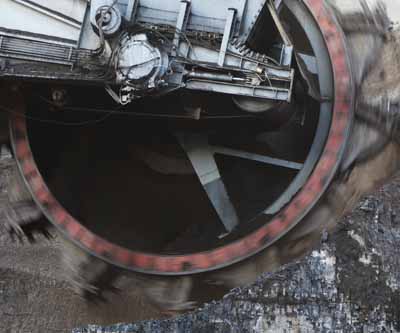 In October 2010 the Chinese government shut down 1,611 illegal coal mines in an effort to improve an industry whose working conditions have been described as harsh, dangerous, and often fatal.
In October 2010 the Chinese government shut down 1,611 illegal coal mines in an effort to improve an industry whose working conditions have been described as harsh, dangerous, and often fatal.
Last year in China more than 2,600 people died in mining-related accidents, including explosions, floodings and cave-ins, although fatalities have decreased in recent years due to increased safety inspections and the government shuttering illegal mines.
China’s State Administration of Coal Mine Safety recently announced that it will require its mines to effect a further 10 percent reduction in fatalities.
The most common cause of accidents in underground coal mines is a methane gas explosion. The problem is not confined to China but persists in all coal mining operations where methane gas is trapped in the coal seam. In Australia, where methane levels are high, mining companies are required to pre-drain the the gas to a safe level before mining can proceed via automatic longwall or continuous mining methods.
Underground mines are the single largest source of coal mine methane (CMM) emissions in most countries, although CMM is also produced from surface mines and as a result of post-mining activities such as coal processing, storage and transportation. Methane is a greenhouse gas that has a global warming potential 21 times as great as CO2 thus its escape into the atmosphere is clearly to be avoided. To put the scale of methane emissions into perspective, it is estimated that by 2020 CMM emissions from the world’s coal mines will be some 40 billion m3/y, about a 30% increase from current levels and about 8% of the total methane emissions from human activity.
Removing methane gas from underground coal mines is a necessary safety measure and it is only recently that there has been a realization that methane is a valuable commodity which can be burnt to create electricity, either for localized use or to be sold on to aggregators. In fact methane can be a big revenue earner as demonstrated by UK Coal, which has pioneered the technology, and which in 2007 realized some £4.3 million profit from gas extracted from its mines, and generated enough electricity to power over 40,000 homes.
The advance of methane recovery monitoring equipment technology is helping companies improve safety and generate new revenue.
Australia’s Industrea group of companies is one example. The Drill Guidance System by Advanced Mining Technologies Pty Ltd. (AMT) drills into the coal seam and extracts the methane for delivery to surface, where it an be stored and utilized as electricity to power a mine or sold into the power grid. The drill rig can drill up to 1 kilometre into the coal seam. The system is fitted with a communications insert that allows information to be passed from the drill head to the drill rig, so the operator is able to navigate the drill accurately through the coal seam.
“It’s basically a directional guidance system that directs the head of the drill,” Industrea CEO Robin Levison said during a recent interview. A software algorithm builds a three-dimensional picture of the coal seam for the mine operator, which show where the gas pockets are and how the seam is best mined, Levison explained.
“The thrust of this tool is to bring the methane levels down to a safe level to allow the mining of coal,” he said. The amount of capturable methane depends on the levels of methane in the seams, but one mine is taking in enough of the gas to power 5,000 homes, said Levison.
There are about 35 methane gas drainage systems working in Australia, with all of them employing AMT’s Drill Guidance System. The largest user is BHP Billiton.
In 2009 The Industrea Group secured five contracts worth AUS$13.6 million to supply directional drilling and gas drainage systems to leading Chinese mining companies Jincheng Blue Flame Coal and Shanxi Changping Coal Mining.
More recently, the company filled a $19 million order from Yangquan Coal Industry for eight systems, bringing to 70 the total number of systems purchased by China – the country with the most units in use, said Levison.
“They buy it for the productivity and safety gains it gives them, where the extra cost allows them to get more coal out at a faster rate,” he said, noting the incidences of methane gas explosions “have dropped significantly” for Chinese coal companies using the DGS.
— with files from International Mining
Learn more about methane recovery systems>>